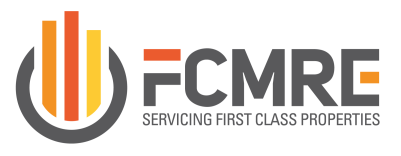In a city where every square foot carries a premium, property owners and managers in New York City are increasingly turning to smart building technologies to reduce operating costs and stay competitive. From Internet of Things (IoT) sensors to advanced energy management systems and predictive maintenance tools, these innovations are transforming how buildings are operated, maintained, and optimized for efficiency.
The Rise of IoT in Property Management
The Internet of Things (IoT) is redefining how property managers monitor and control building systems. IoT devices—such as connected thermostats, motion sensors, and water flow monitors—collect real-time data on everything from temperature and air quality to lighting usage and equipment performance.
For property managers in NYC, where operating costs can easily exceed national averages, this level of insight is invaluable. Smart sensors can automatically adjust HVAC settings based on occupancy, track energy consumption by zone, and alert staff to anomalies like water leaks before they escalate into costly repairs. The result is tighter control over utilities, reduced waste, and enhanced tenant comfort—all without the need for constant manual oversight.
Energy Management: Smarter, Greener, and More Profitable
Energy efficiency is no longer just a sustainability goal—it’s a financial strategy. With rising utility costs and strict local regulations such as NYC’s Local Law 97, property owners are under pressure to reduce emissions and improve building performance. Smart energy management systems enable compliance and cost reduction.
These systems integrate data from multiple building components—HVAC, lighting, elevators, and more—to identify inefficiencies in real time. For example, AI-driven platforms can forecast energy demand based on weather patterns, occupancy levels, and historical usage, automatically adjusting systems to minimize consumption during peak hours. Many NYC property owners are also taking advantage of demand response programs, where automated systems reduce load during high-demand periods in exchange for utility incentives.
By optimizing energy use through smart technology, buildings can lower monthly utility expenses by up to 20%, while also boosting their sustainability profile—an increasingly attractive feature for tenants and investors alike.
Predictive Maintenance: Reducing Downtime and Repair Costs
Traditionally, building maintenance in NYC has been reactive—fixing problems only after they arise. Predictive maintenance changes that equation entirely. Using IoT data and AI analytics, property managers can now detect early warning signs of equipment failure and schedule repairs before breakdowns occur.
Sensors installed on HVAC systems, elevators, pumps, and other critical assets continuously track performance metrics like vibration, temperature, and pressure. When irregularities are detected, the system automatically alerts maintenance staff. This proactive approach minimizes downtime, prevents emergency repairs, and extends equipment lifespan—all of which translate directly to cost savings.
For multi-property portfolios, predictive maintenance software can also prioritize service requests across locations, ensuring resources are allocated efficiently and reducing unnecessary site visits.
The Future of Smart Building Operations in NYC
Smart building technology isn’t just about automation—it’s about creating responsive, data-driven environments that adapt to the needs of tenants, owners, and the city itself. As these technologies become more affordable and integrated, their adoption is expected to accelerate across commercial, residential, and mixed-use properties.
For NYC property managers, embracing IoT, energy management, and predictive maintenance systems is no longer optional—it’s essential. Those who invest in smart building technologies today are not only cutting costs but also future-proofing their assets for a more sustainable, efficient, and competitive real estate market tomorrow.

